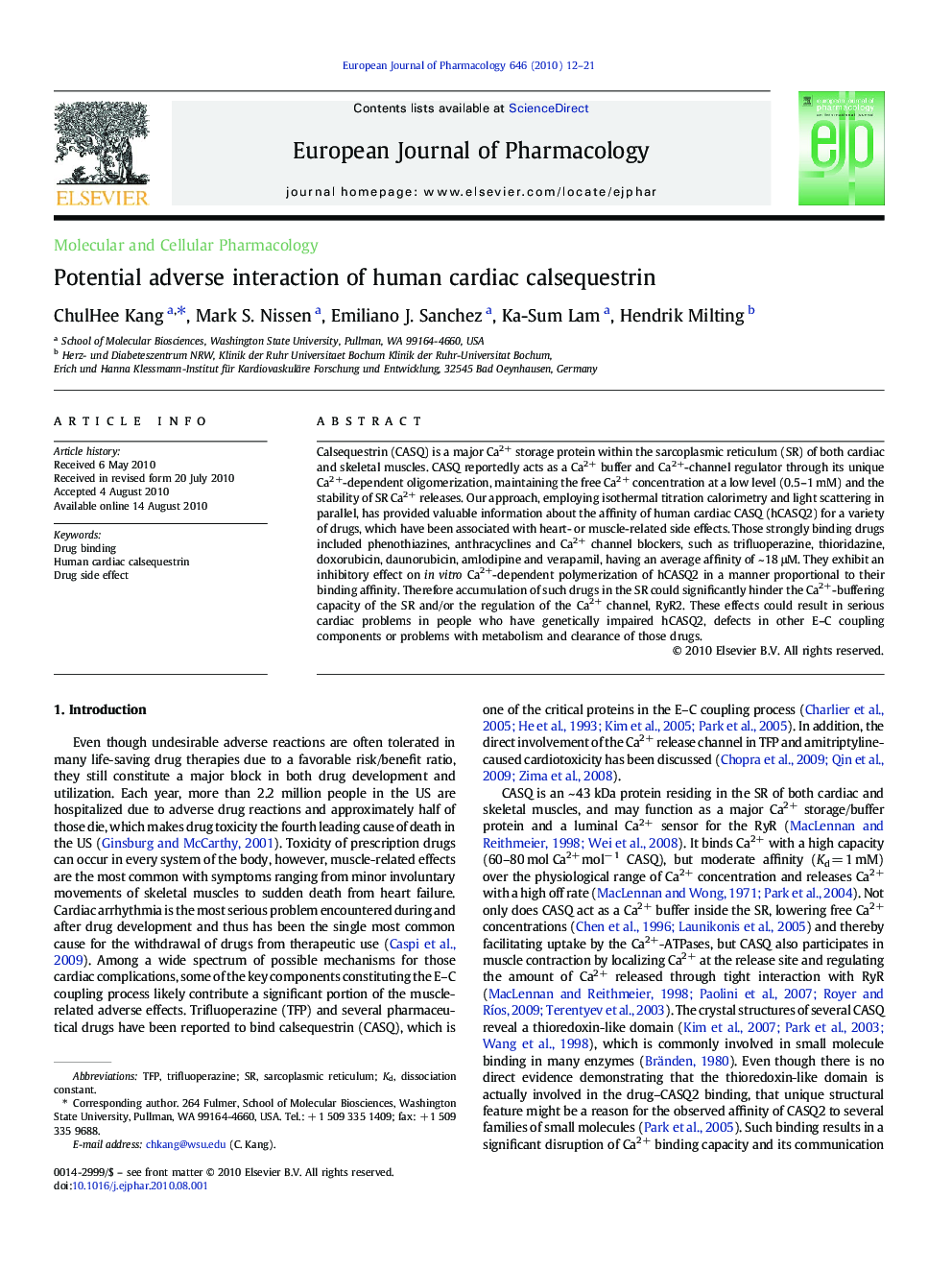| Article ID | Journal | Published Year | Pages | File Type |
|---|---|---|---|---|
| 2533054 | European Journal of Pharmacology | 2010 | 10 Pages |
Calsequestrin (CASQ) is a major Ca2+ storage protein within the sarcoplasmic reticulum (SR) of both cardiac and skeletal muscles. CASQ reportedly acts as a Ca2+ buffer and Ca2+-channel regulator through its unique Ca2+-dependent oligomerization, maintaining the free Ca2+ concentration at a low level (0.5–1 mM) and the stability of SR Ca2+ releases. Our approach, employing isothermal titration calorimetry and light scattering in parallel, has provided valuable information about the affinity of human cardiac CASQ (hCASQ2) for a variety of drugs, which have been associated with heart- or muscle-related side effects. Those strongly binding drugs included phenothiazines, anthracyclines and Ca2+ channel blockers, such as trifluoperazine, thioridazine, doxorubicin, daunorubicin, amlodipine and verapamil, having an average affinity of ~ 18 μM. They exhibit an inhibitory effect on in vitro Ca2+-dependent polymerization of hCASQ2 in a manner proportional to their binding affinity. Therefore accumulation of such drugs in the SR could significantly hinder the Ca2+-buffering capacity of the SR and/or the regulation of the Ca2+ channel, RyR2. These effects could result in serious cardiac problems in people who have genetically impaired hCASQ2, defects in other E–C coupling components or problems with metabolism and clearance of those drugs.
